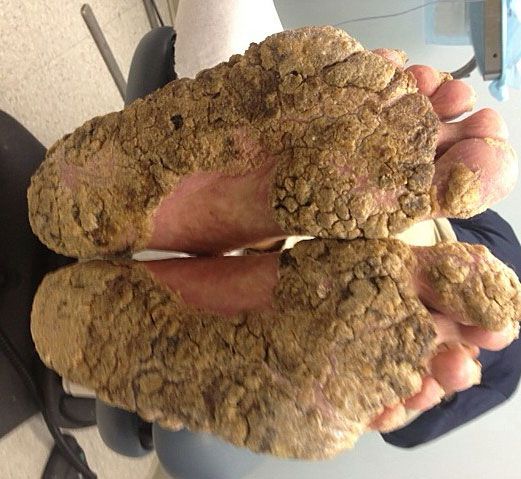- Clinical Technology
- Adult Immunization
- Hepatology
- Pediatric Immunization
- Screening
- Psychiatry
- Allergy
- Women's Health
- Cardiology
- Pediatrics
- Dermatology
- Endocrinology
- Pain Management
- Gastroenterology
- Infectious Disease
- Obesity Medicine
- Rheumatology
- Nephrology
- Neurology
- Pulmonology
Keratoderma
This is a classic keratoderma, which can be due to a variety of congenital defects in keratinization or acquired in association with disease states. Retinoids, systemic and topical, are the treatments of choice.

A 36-year-old man complained about his inability to walk because of extremely thickened soles. This condition had been present, to a variable degree, his entire life.
Key points: Physical examination disclosed massive hyperkeratosis that affected both soles. Some tender and spontaneous painful fissuring was present. This is a classic keratoderma, which can be due to a variety of congenital defects in keratinization or acquired later in life in association with disease states (eg, Reiter syndrome, psoriasis, pityriasis rubra pilaris).
Treatment: Systemic and/or concomitant topical retinoids are the treatments of choice. This patient was treated with acitretin (50 mg/d orally) and tazarotene (0.05% cream, applied twice daily), with significant improvement.
Note: Adjunctive therapy may consist of application of humectant and emollient-containing moisturizers. Such moisturizers might include lactic acid, urea, petrolatum, and mineral oil.
